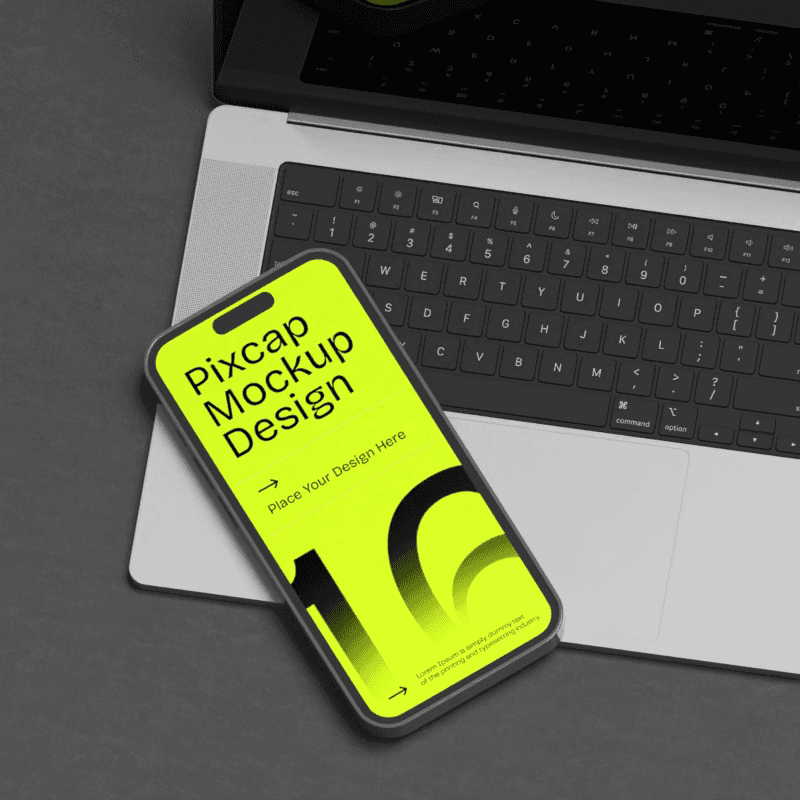Imagine stepping into a world where the barriers of flat surfaces melt away, ushering you into a realm spilling over with depth and realism. This isn't just fanciful imagination; it's what 3D art brings to education—a vibrant dimension where creativity knows no bounds. As an authoritative voice in content creation and with a passion for the artistic process, I want to explore with you how important 3D is in art education and why it's becoming an essential part of learning landscapes across the globe.
Definition of 3D Art Education
At its core, 3D art education involves teaching students about creating, understanding, and appreciating three-dimensional artworks. It extends beyond traditional drawing and painting to include sculpture, ceramics, digital modeling, animation, and more. The shift from viewing art as merely decorative or representational to experiencing it as an interactive spatial phenomenon significantly alters our educational paradigms.
Importance of Art Education in General
Art education nurtures critical facets of human development—the ability to not only perceive beauty but also to envision change. Its significance lies in fostering original thinking and emotional expressiveness among learners. Through cultivating appreciation for aesthetics alongside analytical skills, art training becomes a conduit for personal growth and societal enrichment. When we delve into the role of 3D disciplines within this framework, we uncover layers that tilt perspectives towards innovation and challenge conventional viewpoints on the efficacy of art in shaping pliable young minds.
Intrigued? Let's begin our exploration by diving deep into the transformative aspects of 3D art education—where we craft visions equipped for tomorrow’s realities.
Benefits of 3D Art Education
3D art education is not just about learning to create visual pieces; it's an expansive field that nurtures a multitude of important skills. These benefits extend far beyond the walls of an art room, providing students with abilities that are crucial in both academic settings and real-world scenarios.
Enhancing Creative Skills
Creativity isn't confined to being able to draw or sculpt beautifully; it's also about problem-solving and thinking outside the box. 3D art education lays a solid foundation for these skills by its very nature.
Developing Spatial Awareness and Visualization Abilities
Spatial awareness—the understanding of objects in space and their relations—is fundamental in 3D art. Through creating three-dimensional artwork, students learn to visualize potential outcomes before they even touch materials. This skill is akin to a mental muscle - the more it's exercised, the stronger it becomes.
Fostering Problem-Solving Skills
In 3D art, challenges arise at every corner: How will this structure stand? What materials should be used to achieve a specific texture? Each question requires critical thinking and adaptability—essential qualities for any budding problem-solver.
Promoting Critical Thinking and Analytical Skills
Critical thinking involves analyzing facts to form a judgment. In 3D art classes, students aren't just given instructions; they're often tasked with planning their projects from scratch—an activity that demands high levels of analysis and decision-making.
Stimulating Imagination and Innovation
There's something special about bringing ideas into tangible form that spurs innovation. As learners craft their artworks, they continuously engage in imaginative thought—pondering 'What if?'s' and 'How about?'s', leading them down new creative avenues.
Encouraging Experimentation and Risk-Taking
Without risk, there's no reward—or so they say in artistic circles. A strong 3D art education constantly pushes learners out of comfort zones urging them to experiment with new concepts, tools, or materials which can result in significant learning opportunities whether successes or failures greet their attempts.
Enhancing Sensory Perception
The tactile experience associated with creating 3D artwork enriches sensory perception while simultaneously improving motor skills essential for fine manipulation tasks across various fields.
Improving Hand-Eye Coordination
Handling tools like sculpting knives requires precision—a great practice for honing hand-eye coordination—one of the key takeaways from engaging in 3d art creation processes regularly.
Developing Dexterity
Working with small components when crafting finer details calls for dexterous movements—a skill set greatly refined through continuous practice within three-dimensional mediums.
In conclusion, integrating 3D art into educational systems doesn't just buffer an artistic portfolio; it cultivates creative thinkers equipped with analytical prowess who can navigate complex spatial environments—all wrapped up with finely tuned sensory-motor faculties ready to tackle diverse professional landscapes.
Integrating Technology: Role of 3D Art in Education
The fusion of technology with traditional art forms heralds a new era in educational methodology. In this context, the integration of 3D art is markedly transformative. For students delving into the creative realms, understanding and employing three-dimensional space not only broadens their expressive capabilities but also prepares them for the rapidly evolving digital landscape.
Definition and overview of 3D modeling
At its core, 3D modeling is the craft of creating representations of objects in three dimensions using specialized software. It's akin to sculpting, yet within a virtual environment where artists can manipulate edges, vertices, and polygons to bring intricate models to life. In educational settings, venturing into these digital frontiers does more than teach students how to maneuver cutting-edge tools; it cultivates an intricate understanding of shapes, volume, and design that traditional two-dimensional mediums might not capture as effectively.
Advantages of using 3D modeling in art education
Now let's explore how integrating this innovative practice benefits art education.
Realistic visual representation
Crafting tangible illusions is part and parcel of artistic expression. With 3D modeling, learners can create highly detailed and accurate representations that mirror real-life objects or envisage those that do not yet exist. This capability changes the game by instilling a profound understanding of geometry and perspective vital for many fields such as architecture, product design, animation, and video games development.
Interactive and immersive learning experiences
Incorporating 3D models into education catapults passive learning into active exploration. Students no longer merely observe but interact dynamically with their creations. Such engagement enhances comprehension and retains interest levels as they experiment with different design scenarios right before their eyes—like witnessing firsthand how light interacts with surfaces or how various materials affect aesthetics.
Bridging the gap between imagination and reality
There’s something profoundly impactful about turning daydreams into palpable entities. With conventional mediums making certain conceptual ideas challenging to represent physically—think gravity-defying structures or complex organic forms—3D modeling removes these constraints. Aspiring artists transcend barriers allowing them full reign over their intellectual inventions; what begins as a figment of their imagination can be rotated, analyzed from every angle on-screen, providing an unequivocal canvas to refine even the most avant-garde ideas into workable realities.
Through this narrative I've touched upon multiple facets where 3D art substantively enriches artistic curricula due to its many educational advantages – facilitating realistic visualizations while offering interactive mediums that synergize pure creativity with tangible outputs; realms where future creators can freely operate without hindrance shifting from 'what if' conjectures directly towards crafting solid artefacts straight out from heart's desires seamlessly woven into our physical plane.
Implementing 3D Art Education in Schools
In the dynamic landscape of education, art remains a cornerstone for developing well-rounded individuals. Among its myriad facets, 3D art education emerges as an invaluable aspect that appeals to the sensory experience and cognitive development of students. When it comes to successfully integrating such a dynamic field into school curricula, meticulous planning and problem-solving are imperative.
Curricula Design for Integrating 3D Art Education
Critical to rolling out any educational program is laying down a curriculum that's both comprehensive and adaptable. It must outline clear learning paths yet remain flexible enough to accommodate varied learning paces and styles. Let's delve into the process.
Setting Learning Objectives and Goals
A solid foundation in any subject begins with well-defined objectives. They act as beacons guiding both educators and students towards measurable outcomes. In the domain of 3D art, these goals often include:
Understanding fundamental principles of 3D design.
Acquiring hands-on experience with 3D creation tools.
Developing an appreciation for spatial relationships within design concepts.
With these objectives in mind, educators can tailor their teaching strategies to provide step-by-step guidance from basic sketching techniques up to advanced digital sculpting.
Selecting Appropriate Software and Tools
Once learning targets are established, choosing the correct software and equipment becomes crucial. Given that technology in this field evolves rapidly, schools must strike a balance between cutting-edge capabilities and user-friendly interfaces suitable for beginners. Considerations might include:
Compatibility with existing hardware infrastructure.
Accessibility features for differently-abled students.
Cost-effectiveness considering school budgets.
Suitable software options should offer scalable complexity—simple enough for novices while potent enough to challenge advanced learners.
Addressing Challenges in Implementing 3D Art Education
Despite its benefits, introducing 3D art into schools isn't without hurdles. Notably, overcoming institutional constraints ensures the sustainability of such programs.
Lack of Resources and Funding
Perhaps one of the most prevalent issues is financial restraint—not every institution can easily support technologically intensive courses due to budgetary limitations. Here's how some schools have addressed this challenge:
Seeking grants or partnerships with tech companies offering educational discounts or donations.
Encouraging community contributions through fundraisers or sponsorships.
Moreover, school administrations may need to explore alternative avenues like open-source platforms or collaborative procurement strategies shared across multiple districts. Ultimately, creative solutions are often necessary to bring about change that aligns limited funds with ambitions relating not just to arts but also twenty-first-century skills acquisition.
By prioritizing strategic resource allocation and drawing upon diverse funding streams, schools can take significant strides toward incorporating robust 3D art curriculums – fostering environments where future artists, designers, engineers aptly flourish amidst three-dimensional creations unraveled from their imaginations unto digital canvases.
Case Studies and Success Stories: Impact of 3D Art Education
In the realm of education, concrete examples often speak louder than theoretical discussions. This notion rings especially true for 3D art education, where case studies and success stories not only illuminate its impact but also inspire stakeholders to recognize its value. Emergent narrative threads portray a compelling story: students thrive academically, cognitively, and emotionally through exposure to 3D art. Additionally, such an education opens doors to burgeoning career paths within the dynamic landscape of digital artistry.
Academic achievements and skill development
The advancement of 3D art in educational settings has been linked with notable improvements in student academic performance and skill set enhancements. Various schools integrating 3D design into their curriculum have reported uplifting outcomes:
Students exhibiting significant leaps in geometry scores due to improved spatial reasoning.
Enhanced engagement and higher rates of project completion when tasks involve creative 3D assignments.
Recognition at science and tech fairs for student projects utilizing 3D printing technologies.
Drawing upon these instances makes it unmistakable that proficiency in three-dimensional art can be a building block for comprehensive skill development with cross-disciplinary benefits extending beyond the arts.
Cognitive and emotional growth
The intersection of cognition with emotion finds fertile ground in the study of 3D art. Engaging with sculptural forms or intricate digital models facilitates different modes of thinking:
Critical analysis is sharpened as learners consider form, function, and aesthetics collectively.
Innovation thrives among students who manipulate virtual objects in ways that defy physical constraints.
Students' persistence grows as they encounter challenges inherent to creating complex 3D designs.
Equally important is the boost in self-esteem seen in children overcoming obstacles during creation processes—confirming how mastery over sophisticated tools can lead to emotional fortitude.
Career opportunities in the field of 3D art
In enunciating the professional horizons available to those adept at 3D modeling and design, one reveals an industry astir with potential:
Animation Studios: From Pixar's breathtaking realism to indie game developers crafting immersive worlds, command over 3d visuals serves as a vital qualification.
Architecture Firms: Utilizing CAD software for virtual walkthroughs is now essential; therefore, architectural visualization emerges as a specialized career trajectory.
Biomedical Engineering: Astounding applications like prosthetic design highlight how critical this competency is across sectors far removed from traditional art disciplines.
Such trajectories articulate that learning keys open varied doors – ones leading towards unwritten chapters earmarked by ingenuity and opportunity alike.
As you've embarked on this journey through case studies illuminating the multifaceted advantages bestowed by incorporation of three-dimensional pursuits within pedagogical frameworks—there's clarity about its compendious benefits spanning intellectual properties and personal capacities—even branching into formidable career prospects reflecting our digitally sculpted future.
Resources for 3D Art Education
Navigating the expansive ocean of 3D art education resources can be daunting. Let me help you chart a course through these digital waters, highlighting key platforms and tools that are instrumental in mastering the craft.
Online Tutorials and Courses
The first ports of call for many budding digital artists are online tutorials and courses. Here's why:
Self-paced learning: You can learn at your own rhythm, taking time to thoroughly understand each concept before moving on.
Diverse content: From beginner introductions to advanced techniques, there is something for everyone.
Platforms like Udemy, Coursera, and Skillshare teem with comprehensive lessons that cater to a variety of skill levels. Moreover, sites such as Khan Academy offer free educational courses in art fundamental principles which dovetail beautifully with 3D concepts.
Virtual Galleries and Showcases
In addition to formal instruction, virtual galleries and showcases play an essential role:
Inspiration: They expose students to current industry standards and creative solutions by peers.
Community feedback: Most online galleries enable comments and critiques from fellow users - invaluable insights that foster growth.
Behance, ArtStation, or even Instagram serve as both showcase spaces and informal classrooms where feedback flows freely among artists. For detailed study, museums around the world now offer virtual tours showcasing classical artworks perfect for studying form and volume – critical components in understanding 3D design.
Recommended Software and Tools for Beginners and Advanced Users
When it comes to creating 3D art, having the right software at your fingertips isn't just helpful; it's necessary. There's a plethora of tools out there tailored to different aspects of 3D creation–here are some staples:
User-friendly Modeling Software
For those dipping their toes into the rich waters of 3D modeling:
Blender: This free software is robust enough for professionals yet accessible for newcomers.
Tinkercad: An ideal starting point focused on basic shapes that even children can use intuitively.
High-quality modeling forms the backbone of all 3D artwork; thus selecting software that aligns with one's level while allowing room for advancement proves crucial.
Sculpting Tools
Creating intricate models often requires sculpting tools akin to working with digital clay:
ZBrush: Predominantly used by professionals thanks to its sophisticated features.
Sculptris: A good starting point offering a simplified version with fewer tools but plenty of creative potential.
Learning this aspect refines skills further, enhancing details that bring designs startlingly close to reality.
Texturing and Rendering Software
Once models take shape, texturing breathes life into them while rendering brings them into vivid focus:
Substance Painter: Ideal for adding realistic textures complete with bumps, scratches or any imaginable surface detail.
KeyShot: Boasts fast rendering times without sacrificing quality—perfect when time is tight or deadlines loom.
Mastering these processes elevates artworks from mere models to striking pieces resonant with character and depth. Texturing introduces complexity; rendering illuminates it spectacularly.
Future prospects and trends in the field
The horizon looks bright for those immersed or embarking on journeys through 3D art education. Technological advancements continually push the boundaries of what’s possible, suggesting several exciting trends:
Greater Accessibility: As tools become more user-friendly and cost-effective, expect wider adoption in schools across diverse economic backgrounds.
Increased Interdisciplinarity: Collaboration between digital artists and professionals in fields like medicine and engineering points towards a symbiotic growth rich with potential.
Expanding Career Opportunities: With industries leaning towards virtual designs—from gaming to product prototyping—the demand for those skilled in 3D technologies is bound to rise.
Emphasis on Environmental Consciousness: Digital art allows for experimentation without physical waste products; such eco-friendly practices will likely gain focus.
AI Integration: Artificial intelligence could streamline certain processes within 3D modeling while also opening doors for dynamic forms of interactive artwork.
In essence, how important is 3D in art education cannot be overstated given its profound implications on current pedagogies and prospective vocational paths. Encouraging students today means providing them not only with knowledge about existing techniques but also preparing them for upcoming innovations—solidifying their ability to adapt, evolve, and flourish no matter what future landscapes may emerge.
Summary of the importance of 3D art education
The journey through understanding the significance of 3D art in educational settings leads us to acknowledge its indispensable role:
It enhances creative skills, teaching students to envision and bring to fruition ideas that transcend two-dimensional constraints.
By developing spatial awareness and visualization abilities, learners can comprehend complex concepts with greater ease and clarity.
The promotion of critical thinking alongside analytical skills empowers students to dissect problems and engineer innovative solutions.
Additionally, sensory perception grows sharper as students engage with tactile feedback from their creations—a key component in developing fine motor skills essential not just for artistic endeavors but also practical daily activities.
As we blend traditional techniques with these modern approaches, we witness marked advancements both in individual competencies and overall educational paradigms. The influence of 3D art is pervasive; it shapes thinkers who are equipped to tackle future challenges with ingenuity.
Conclusion
Exploring the question of how important is 3D in art education has unraveled a multitude of facets where this innovative area has already made an indelible impact. To summarize, integrating 3D methodologies within educational frameworks fosters a forward-thinking mindset among students and educators alike. It encapsulates the nurturing of vital skills such as creativity, problem-solving, critical thinking, spatial awareness, as well as motor skills—all essential for students to thrive in various walks of life.














